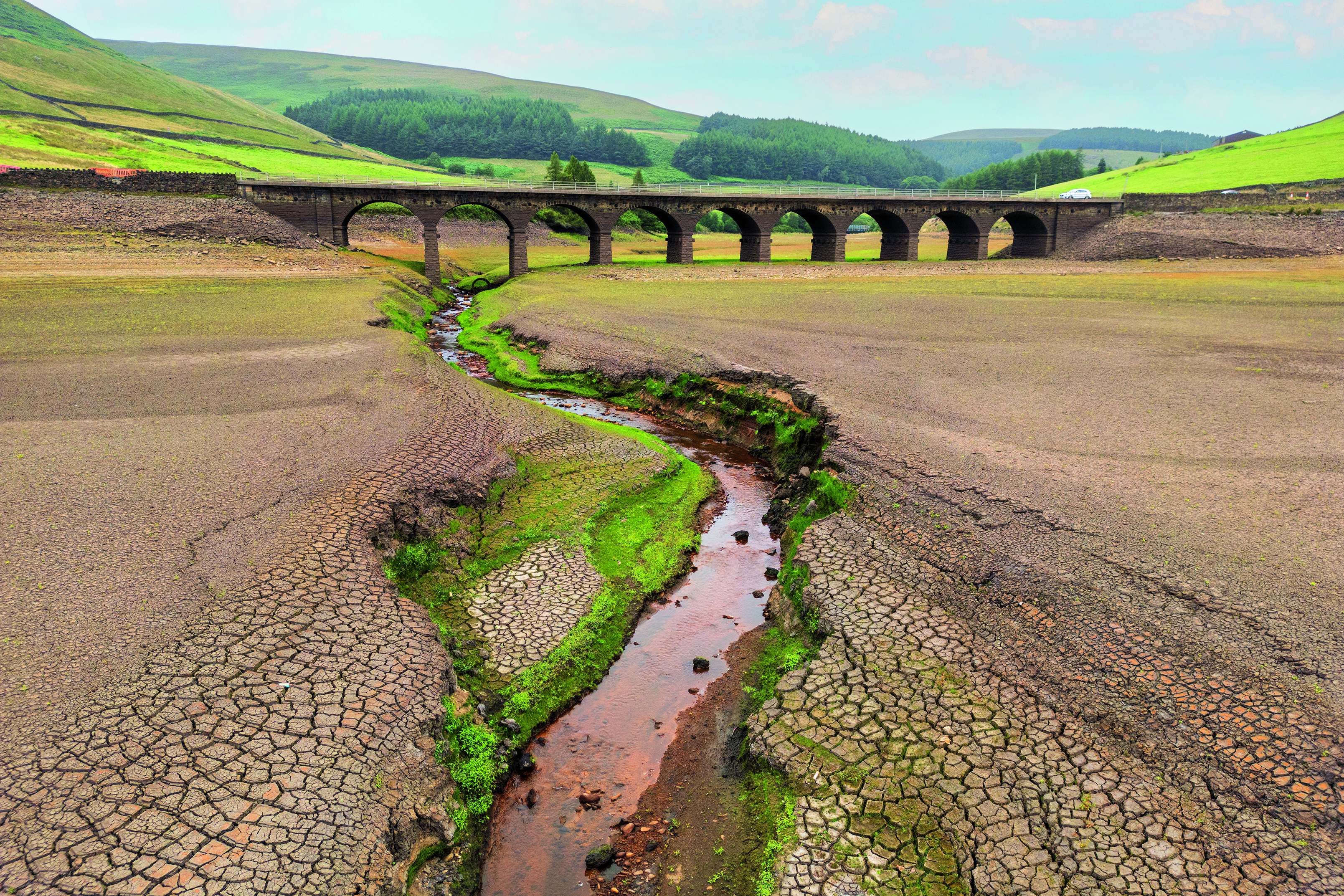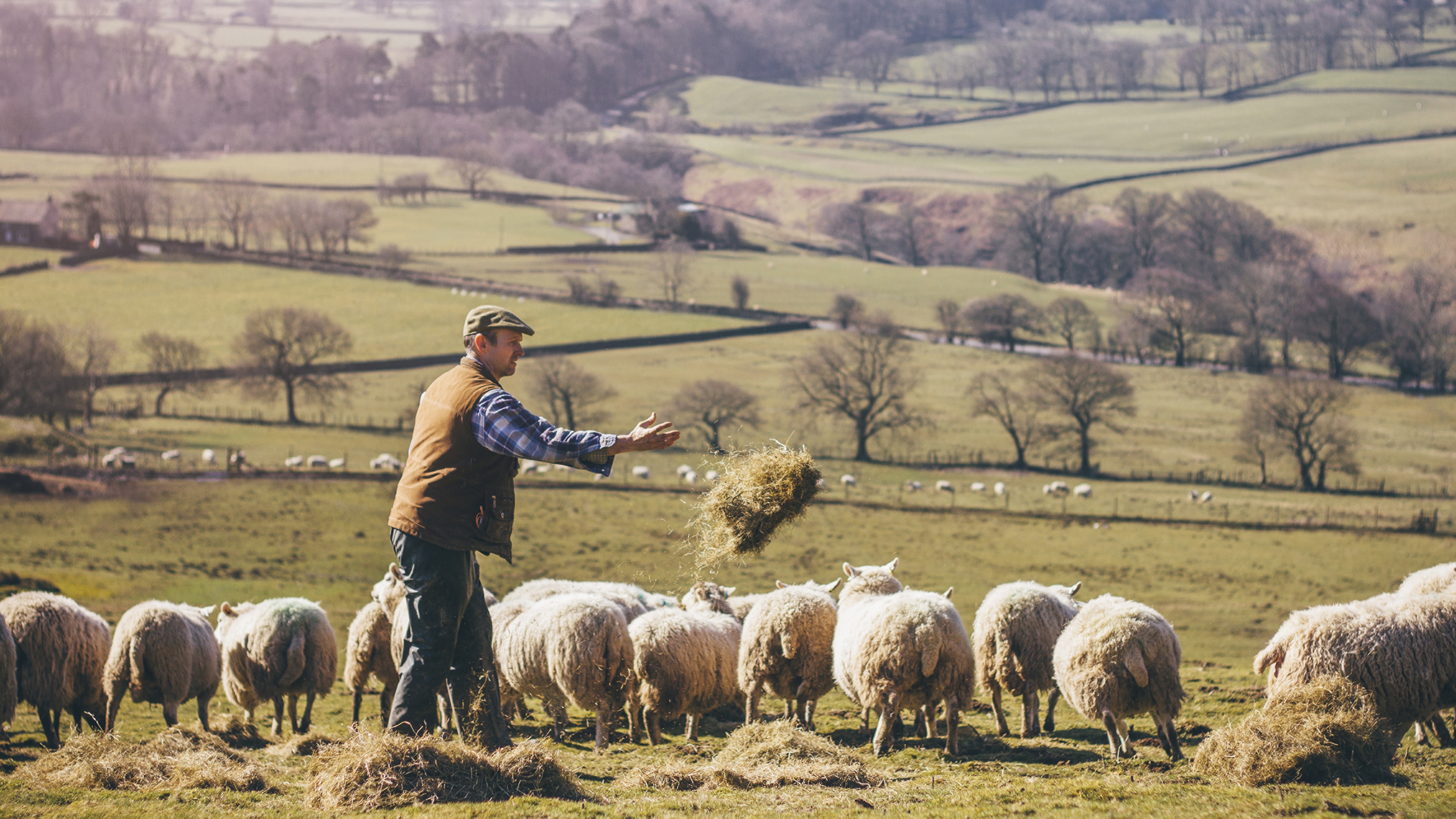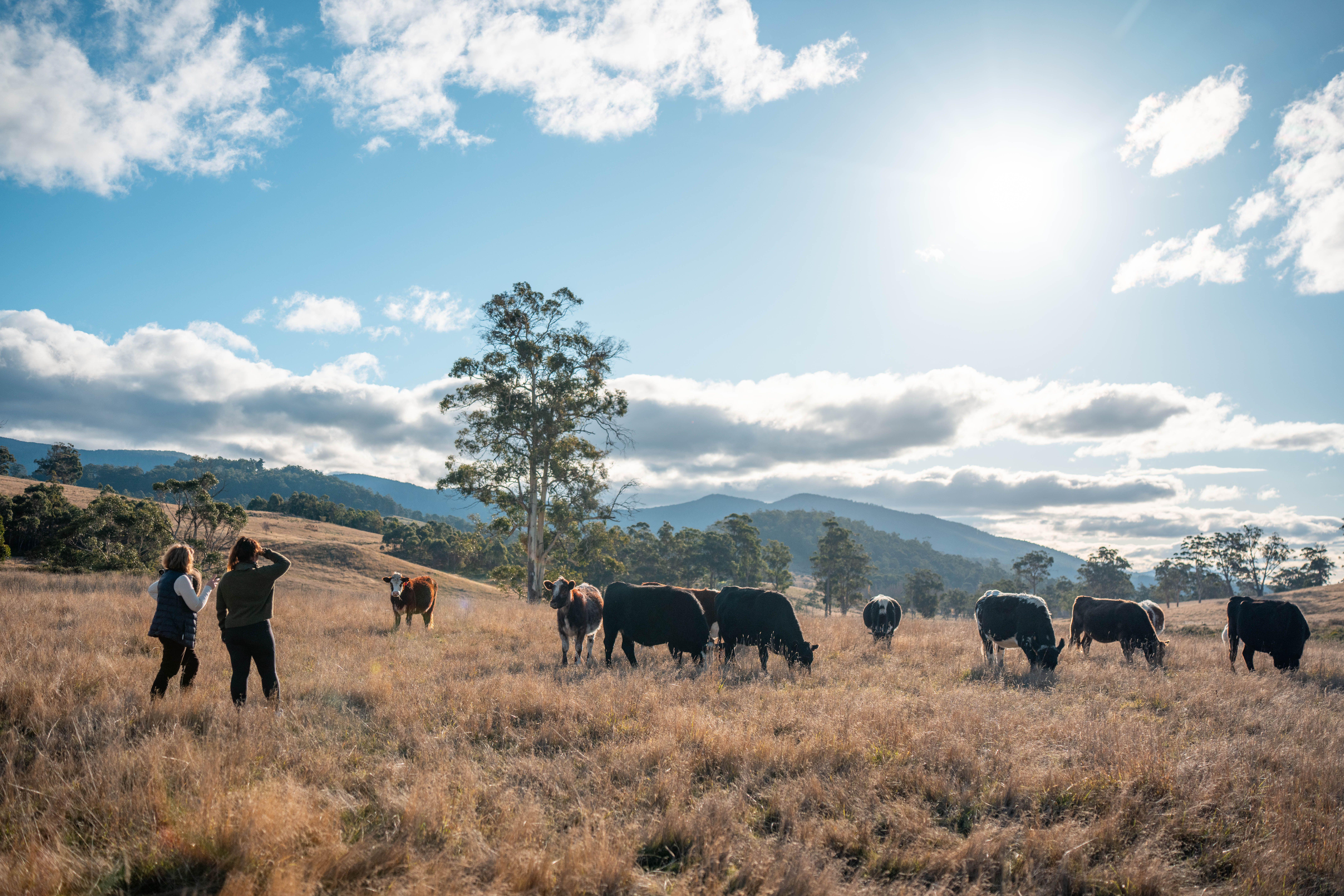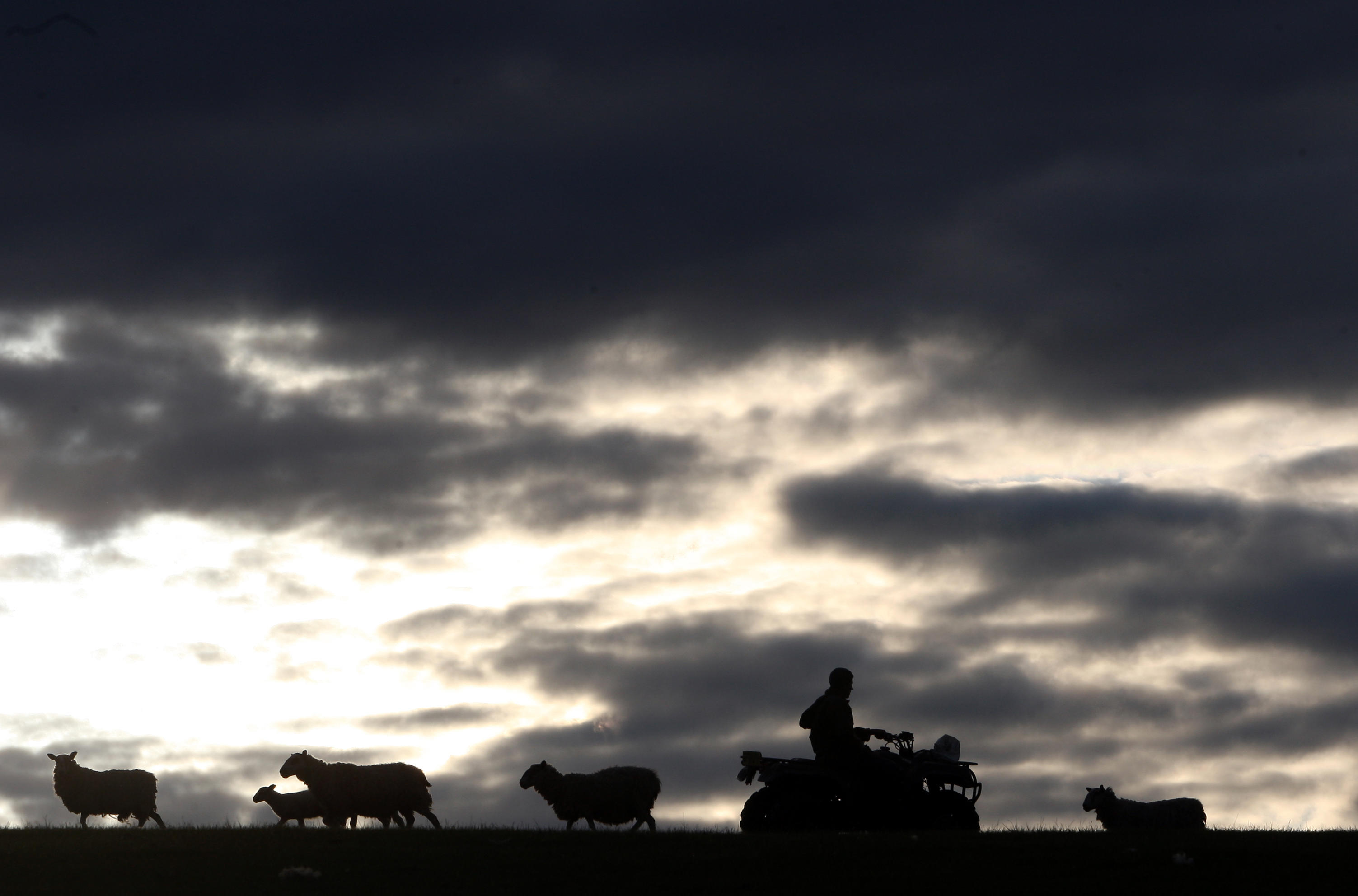Five years of drought means there's only one conclusion for Britain's farmers: 'Climate change is real and affecting us now'
The cumulative effects of the past five years of hot weather are causing chaos for farmers — and there's no signs that it will improve. Jane Wheatley reports.


The years 2023 and 2024 were the warmest recorded and the trend shows no sign of abating. Now, in these dry, dusty dog days of August, following the driest six months to July since 1976, we are dutifully hanging up the hosepipe, throwing washing-up water on the garden and turning the tap off during toothbrushing.
At least, some of us are — Britain is apparently the most profligate nation in Europe when it comes to water. In addition, no new reservoir has been built here for 30 years and Ofwat, the water-company regulator, has been declared unfit for purpose in the Cunliffe Report.
A recent suggestion to delete quantities of emails — digital clutter consumes millions of litres of water — was subsequently pooh-poohed by veteran tech analyst Gary Barnett but, nonetheless, data centres will get bigger and require more water. Electricity generation is the largest water consumer; according to researchers at Oxford University, wind and solar energy could reduce water withdrawals related to power generation by 50% by 2030.
The National Drought Group has declared the lack of rain a ‘nationally significant incident’ in England and recently added south-east Wales to the list of drought-affected areas (with Yorkshire, Cumbria, Lancashire, Greater Manchester, Merseyside and Cheshire, East Midlands and West Midlands), as others in the east and south of the country were suffering ‘prolonged dry weather’, the phase before drought. Yorkshire, Thames, South East and Southern water companies have applied postcode-specific hosepipe bans.
"The National Bee Unit sent out a starvation alert, advising beekeepers to check colonies and feed syrup if necessary"
There are, however, regional differences: on damp Exmoor, the grass is still lush and the water level in Wimbleball Reservoir on the Brendon Hills in west Somerset was described earlier this month as ‘comfortable’ at about 60%, a similar level to reservoirs in the South-West, including on Dartmoor and Bodmin Moor, all of which which were much dryer in 2022. Both the British Growers Association and the NFU have observed that shortfalls in crops in some areas will be mitigated by better supplies from cooler, wetter areas — for one thing, it’s been a fine year for apples. Overall, however, only spring barley delivered consistently good yields, thanks to early rain followed by sunshine.
In the Derbyshire Peak District, a dairy farmer has recorded the lowest rainfall in 24 years. He has been forced to give his cows silage — grass cut last year, stored and intended for winter feed — and his milk yield in July was down by almost 10%. In Monmouthshire, a hay merchant says his crops were down by 45%-50% and the price for the small bales he makes for horse owners will rise from £5 to £7 each. In the East of England, fine weather has meant an early harvest of cereals, potatoes and sugar beet, but yields are down. The pea harvest was badly hit, with growers lamenting an average of five peas in a pod instead of the usual eight or nine and brassica growth has been stunted. The National Bee Unit sent out a starvation alert, advising beekeepers to check colonies and feed syrup if necessary.
Farmers are used to unpredictable weather, but the cumulative effects of the past five years may prove to be too much for some. As Prof Nicola Cannon of the Royal Agriculture University notes: ‘Climate change is real and affecting us now.’
Exquisite houses, the beauty of Nature, and how to get the most from your life, straight to your inbox.
This feature originally appeared in the print edition of Country Life — here's how you can subscribe to Country Life magazine.
Jane Wheatley is a former staff editor and writer at The Times. She contributes to Country Life and The Sydney Morning Herald among other publications.
-
 Can you buy happiness? The latest list of Britain's happiest places, and what you could end up with if you moved there
Can you buy happiness? The latest list of Britain's happiest places, and what you could end up with if you moved thereCan you buy happiness? Of course not, but you can buy a nicer house in a better town... and, well, that's probably going to help quite a bit.
-
 Is the British Museum's attempt to save a Tudor-era pendant with links to Henry VIII proof that the institution is on the up?
Is the British Museum's attempt to save a Tudor-era pendant with links to Henry VIII proof that the institution is on the up?After years of neglect and controversy, Britain's premier cultural institution seems to be finding its feet again.
-
 I was Jeremy Hunt’s main political adviser and helped put together multiple Autumn Statements and Budgets. This is what I think Rachel Reeves’s Budget means for the countryside
I was Jeremy Hunt’s main political adviser and helped put together multiple Autumn Statements and Budgets. This is what I think Rachel Reeves’s Budget means for the countrysideAdam Smith, former chief of staff to the Chancellor of the Exchequer, reflects on what last week's Budget means for the countryside and how we ensure the rural voice is heard loudly inside Budget preparations.
-
 The Budget: What do we need to fix a broken countryside, and what will we get?
The Budget: What do we need to fix a broken countryside, and what will we get?With the Autumn Budget looming, countryside and heritage organisations reveal what they are hoping to hear to fix the turmoil — and what they are dreading
-
 'I’m going to be the first in more than 100 years to sell anything off': How the upcoming budget uncertainty is impacting young farmers
'I’m going to be the first in more than 100 years to sell anything off': How the upcoming budget uncertainty is impacting young farmersChanges to inheritance tax, property relief and Defra budgets will likely change Britian's rural landscape. We ask the next generation of farmers what they think their future will look like.
-
 An unfenced existence: Philip Larkin's love of the countryside
An unfenced existence: Philip Larkin's love of the countrysideRichard Barnett pokes at Larkin’s protective carapace of soot-stained gloom and finds a writer with an unillusioned yet tenderly perceptive sense of Nature, in all its beauty and indifference
-
 Baby, it’s cold outside (even if you have a natural fur coat): How our animals brave the winter chill
Baby, it’s cold outside (even if you have a natural fur coat): How our animals brave the winter chillWhen the temperature drops, how do Britain’s birds, beasts and plants keep the cold at bay? John Lewis-Stempel reveals Nature’s own thermals.
-
 Retro rubbish: Waste from the 90s unearthed in 97-mile-long beach clean
Retro rubbish: Waste from the 90s unearthed in 97-mile-long beach cleanThe 6,482 volunteers unearthed waste discarded decades ago among the 232,229 pieces of litter recorded during the initiative.
-
 Dangerous beasts (and where to find them): Britain's animals that are best left alone
Dangerous beasts (and where to find them): Britain's animals that are best left aloneJohn Lewis-Stempel provides a miscellany of our otherwise benign land’s more fearsome critters.
-
 Mystery, muse and metaphor: There's more to fog than meets the eye
Mystery, muse and metaphor: There's more to fog than meets the eyeSmothering, transformative and beautiful, fog’s close-set shroud has inspired titans of literature, cinema and art — and forces the rest of us to look at the world a little closer.
